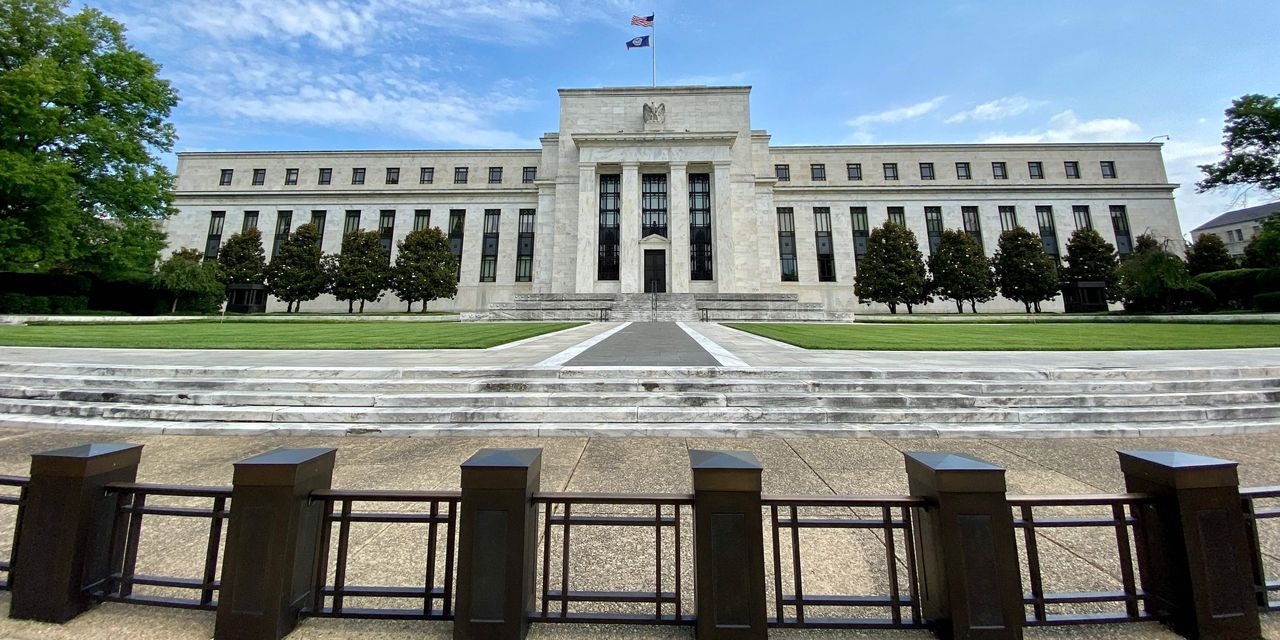
The Federal Reserve surprised markets this week by announcing it will begin to gradually sell off its corporate debt holdings accumulated during the pandemic, a tiny step toward dialing back its far reach into financial markets.
The central bank’s holdings of corporate bonds and related exchange-traded funds account for about $14 billion in combined assets, or roughly 0.1% of the $10.6 trillion U.S. corporate bond market.
But the Fed’s move away from corporate debt does signal a shift in its prior full-throttle approach to the crisis.
“I think it’s a good sign,” said Patrick Tadie, Wilmington Trust’s head of structured finance, adding that it shows the Fed thinks that “some supports in place for a while may not be as necessary, and that private-sector investors should be able to pick up the slack.”
The reaction in funds that specialize in U.S. corporate debt has been muted since Wednesday’s announcement, with the closely watched iShares iBoxx $ Investment Grade Corporate Bond ETF LQD, -0.39% down 0.4% Thursday, the iShares iBoxx $ High Yield Corporate Bond ETF HYG, -0.21% off by 0.2% and the SPDR Bloomberg Barclays High Yield Bond ETF JNK, -0.14% down 0.1%.
Stocks also booked modest declines Thursday, with the Dow Jones Industrial Average DJIA, -0.07% off 0.1%, but enough to snap a five-day win streak.
Meanwhile, the return investors earn by owning corporate debt has dropped dramatically since the Fed swooped in roughly a year ago with its first-ever purchases in the sector.
Read: The Fed has bought $8.7 billion worth of ETFs. Here are the details
Investment-grade and high-yield U.S. corporate bond spreads, or the premium bonds pay over a risk-free benchmark, have been inching closer to 20-year lows, helped along by the Fed’s backstop.
So what’s the big picture? The Fed’s corporate assets represent a drop in the bucket compared with its record nearly $8 trillion balance sheet, which has nearly doubled in size since March 2020, mainly through its massive $120 billion-a-month program to buy risk-free Treasurys TMUBMUSD10Y, 1.625% and agency mortgage bonds.
That’s the main liquidity program the Fed talks about in terms of restarting asset purchases in a crisis or when considering “tapering” as the economy recovers.
While no tapering plans for that key bond-buying program have been put on the table yet, debate has emerged within the central bank about when to discuss scaling back purchases as the threat of COVID-19 subsides in the U.S. with ramped up domestic vaccinations and as progress picks up elsewhere.
New York Fed President John Williams weighed in Thursday, saying that he thinks it’s too soon for the central bank to start slowing down its asset purchases.
But signs of overkill with the Fed’s Goliath-like presence in the Treasury and mortgage-bond markets already might be emerging, particularly as banks struggle to find places to park cash overnight and housing prices skyrocket.
Read: Why demand for Fed’s reverse repo facility is surging again
Mortgage lending also has slowed as 30-year home loan rates have ticked up and as more eligible borrowers have refinanced during the pandemic, adding to concerns that the Fed’s $40 billion-a-month mortgage bond purchases might need to slow.
Still, some investors view the Fed’s corporate-debt exit as timely, particularly since the program has been a success in terms of helping to limit corporate defaults during a global public-health crisis, but also that it would be easy to restart.
“They came in with shock and awe,” said Nicholas Elfner, co-head of research at Breckinridge Capital Advisors. “Now they are pulling it back — but they are there.”
“Essentially, there is kind of a feeling that the Fed will be involved in U.S. bond markets, as needed,” he said.
“Why wouldn’t they do it again?”
Read next: Why the bond market might not suffer another taper tantrum when the Fed signals it’s ready to move










Add Comment